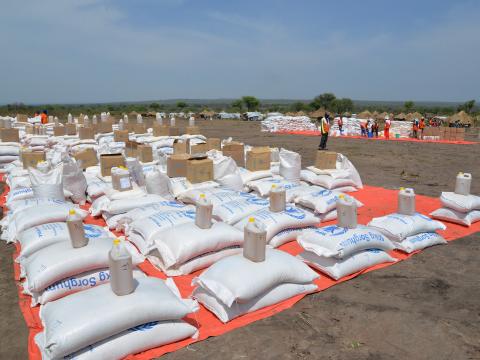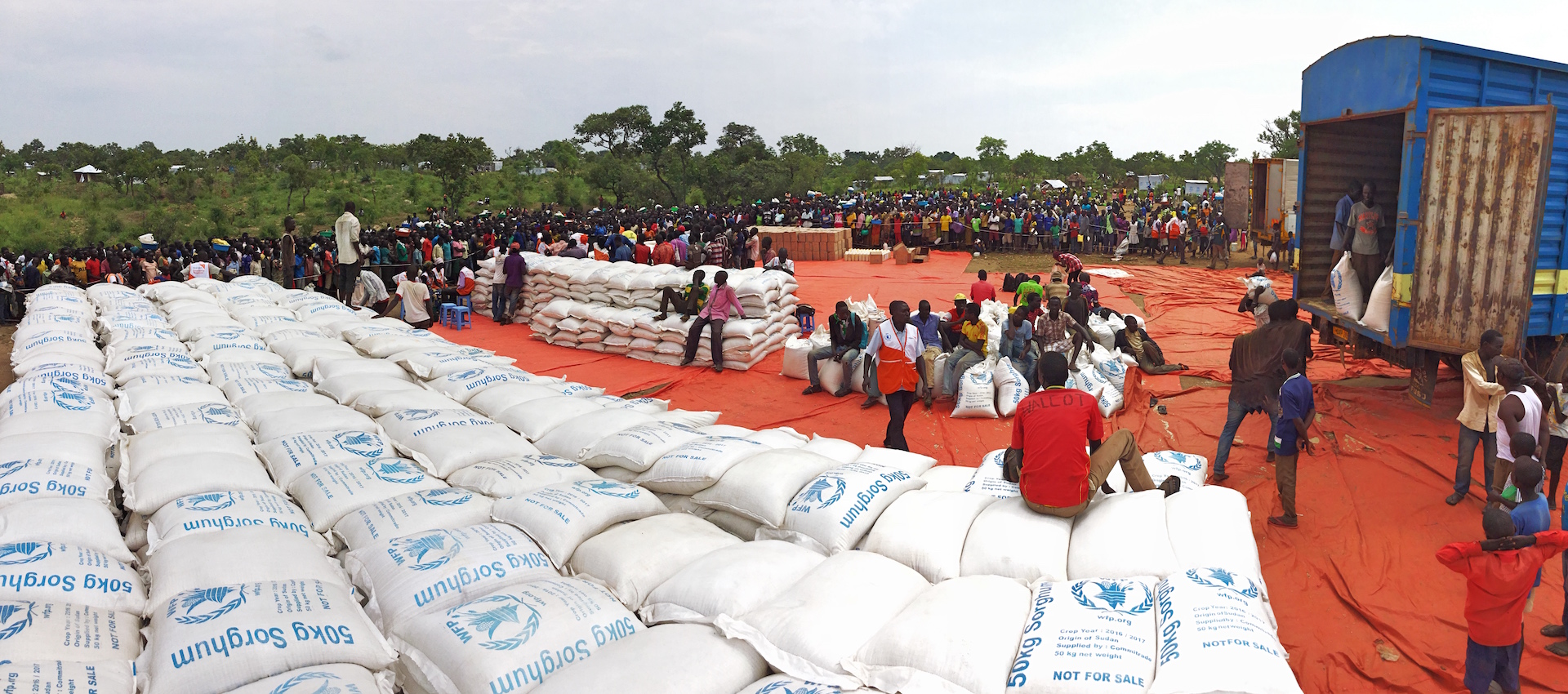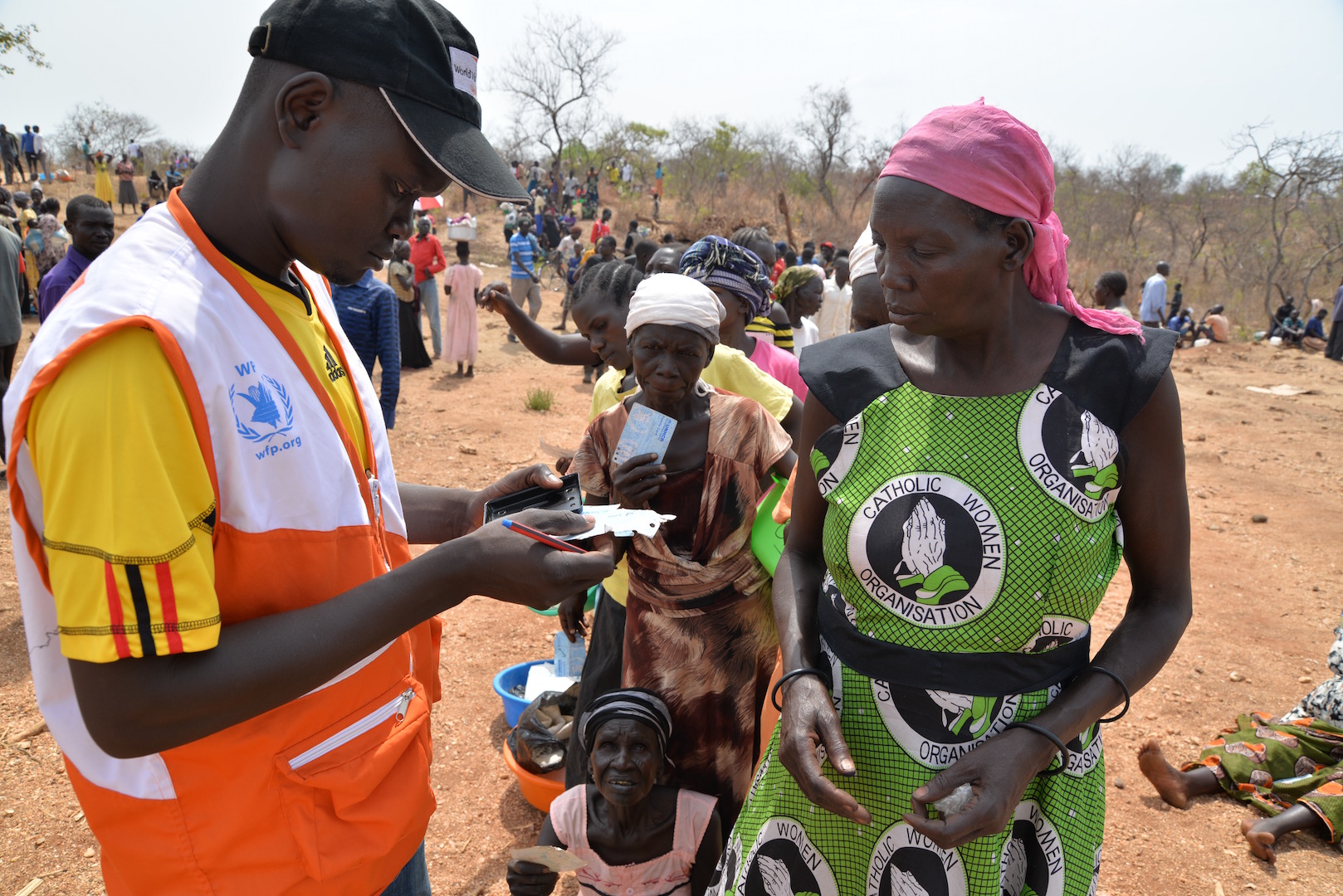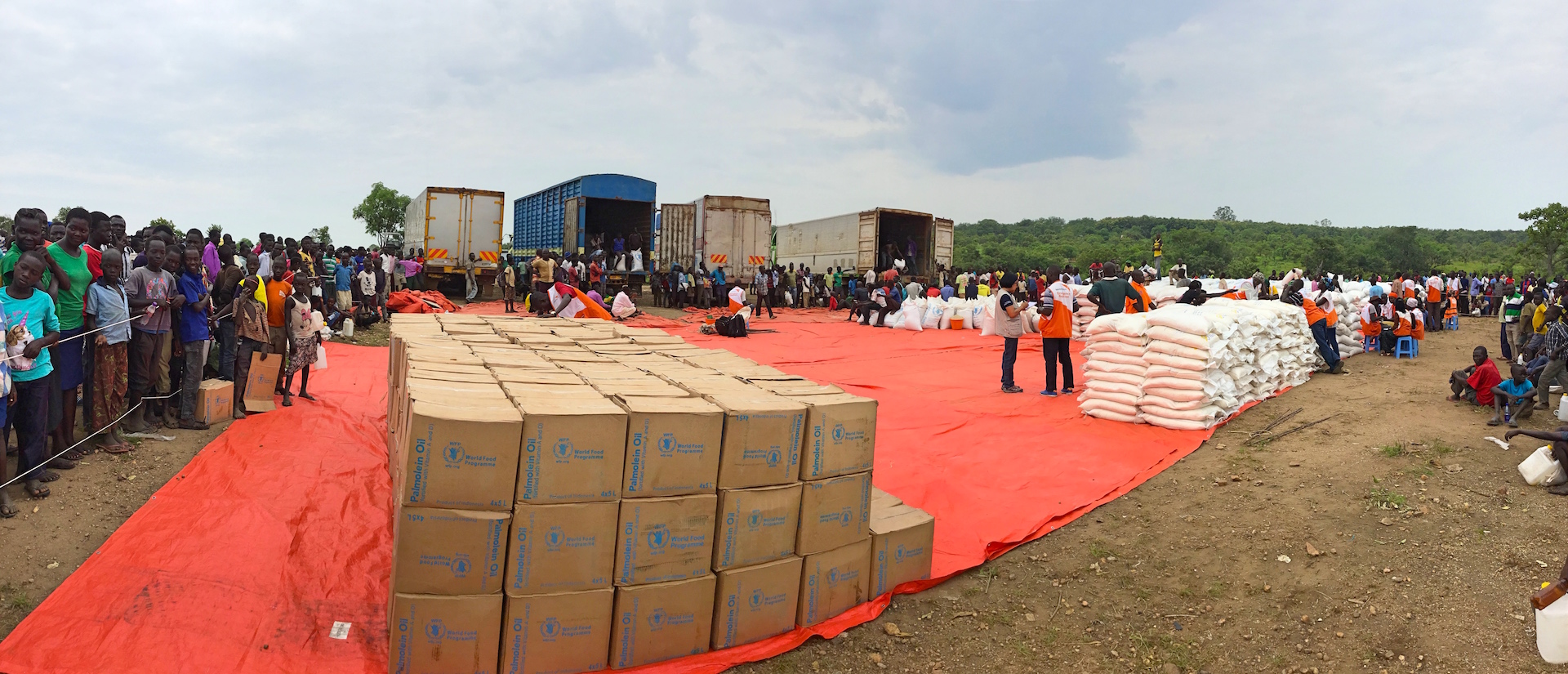Over 690,000 refugees receiving food from World Vision every month

By Moses Mukitale, Communication Coordinator, West Nile Refugee Response
Imagine a transport truck trailer. Imagine it filled with food – most of it filled with maize, a section for salt, some with cooking oil, and finally a section for beans. Now imagine 583 of these trailers (20 Metric tonne trucks) side by side.
And of course a little extra.
That’s about how much food we’re distributing to refugees in northern Uganda every month.
We’re making sure nearly 690,000 refugees are receiving the food they need to survive in their new communities, after everything they owned was abandoned in their homeland.
For refugees who live in communities where food markets are well established, we provide cash instead of food – enabling 17,641 people to purchase food of their choice from registered vendors.
And then there are hot meals served to newly arrived refugees and high energy biscuits provided to people at border points.
World Vision’s food team is committed to ensuring people in crisis have something to eat.
Where are we working?
With funding from the World Food Programme, World Vision’s food team of 270 staff and 220 casual workers implements food and cash assistance programmes in the districts of:
· Arua (Imvepi, Omugo, Rhino)
· Yumbe (Bidibidi)
· Koboko
· Moyo (Palorinya)
The organisation’s current food activities for financial year 2016-2017 are valued at USD$153.3 Million.
What’s in the monthly food rations?
Monthly food rations comprise of vegetable oil, salt, beans, maize meal/grain, sorghum and corn-soy blend.
The food is distributed at 82 different distribution points in the West Nile region of Uganda. On some days, more than 6,000 people are served.
In terms of tonnage, every month World Vision distributes 7,100 MT of cereals, 1102.41 MT of maize meal, 1557.20 MT of pulses, 621.75 MT of cooking oil, 1038.40 MT of corn soya blend and 104.47 MT of salt every month.
This food is transported by a fleet of 48 trucks which are managed and supervised by World Vision.
However, this tonnage varies with pipeline breaks, availability of commodities in food basket, hybrid distribution (Cash/Food) plus increase in beneficiary numbers as a result of new arrivals.
What are high-energy biscuits?
Wheat-based biscuits provide 450kcal with protein, vitamins and minerals. They are the very first food item the refugees receive after spending days and nights moving on empty stomachs.
The biscuits are also provided at transit centres as refugees await completion of registration and transfer to the reception centre. They are supplied by the World Food Programme and distributed by World Vision.
Uganda currently has more than four informal entry points being used by South Sudanese as they flee. At each border point, World Vision staff are stationed to provide two packs of high-energy biscuits to each new arrival.
Ingredients:
Wheat flour, Hydrogenate Vegetable Shortening, Sugar, Soy flour, Invert Syrup, High fructose, Corn Syrup, Skimmed milk powder, Sodium and Ammonium, Bicarbonates, Salt, Minerals and vitamins as: Calcium, Magnesium, Iron, Iodine, Folic Acid, Pantothenic Acid, Vitamin B1, B2, B6,B12b C,D,E, Niacine, Vitamin A-retinol.
What are the hot meals?
The food served consists of corn meal, beans and corn-soya blend porridge.
This is the very first hot meal a refugee will get upon reaching Uganda. Sometimes refugees will spend close to four days at the reception centre pending registration. And during all this time, World Vision is serving them hot meals.
World Vision, with funding from UNHCR, partners with a local agency (Uganda Refugee Disaster Management Council) to prepare and serve hot meals to all new arrivals from South Sudan. It is served at Imvepi reception centre.
Hot meals are also served at the overnight shelter centre in Omugo, where new arrivals are temporarily stationed before receiving plots of land. Because refugees are not able to prepare food on the first day they receive their plots of land, World Vision still takes them hot meals in the settlement.
What about the cash distribution?
Refugees who were in Uganda before July 2016 are given the choice to decide between receiving cash or food rations, adequate to meet the emergency food need of 2,100 kilocalories per day.
Approximately 13,234 South Sudanese refugees are receiving cash in Rhino camp, while 4,407 Congolese refugees are receiving cash in Koboko. World Vision partners with WFP and Post Bank to do cash distributions in the two locations.
World Vision has also previously done cash transfers to refugee foster families to enable them start up small businesses and to buy basic house old items. The organization is also doing cash-for-work transfers at Omugo refugee settlement.
How do you manage such a large volume of food?
World Vision is also managing the World Food Programme owned food warehouse in settlements of Bidibidi in Yumbe district, Rhino camp in Arua district, and Palorinya in Moyo district.
These are handling a total storage capacity of 9600 Metric Tonnes of assorted food items.















